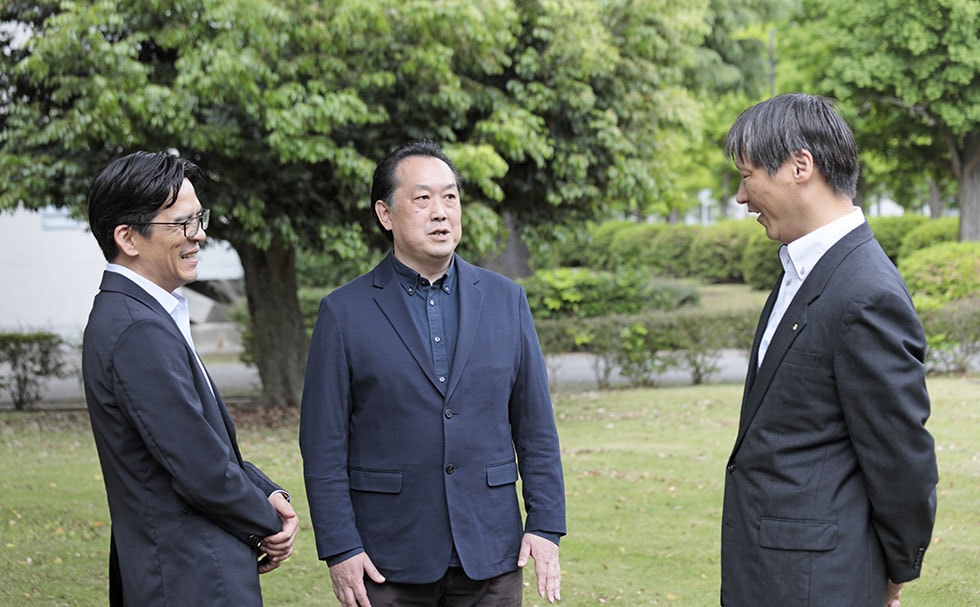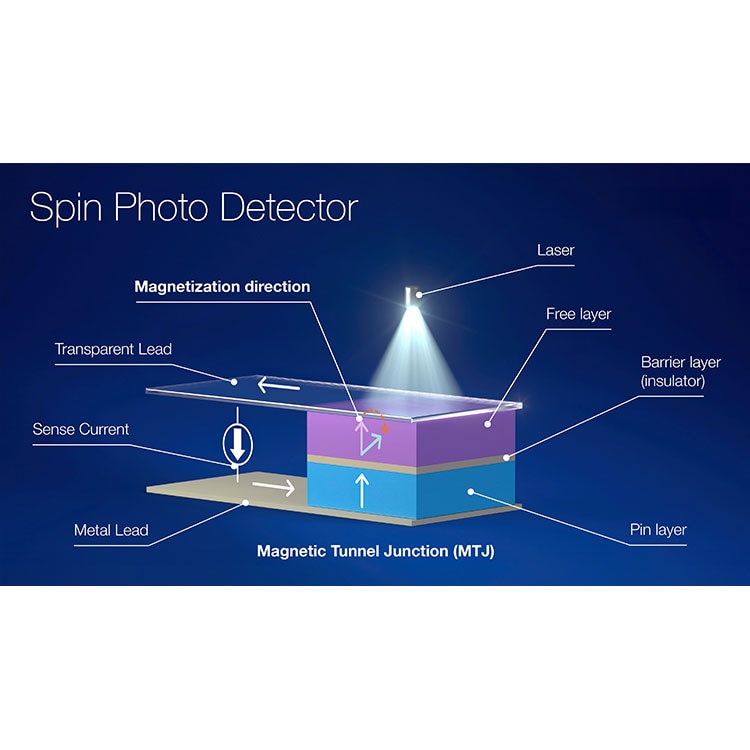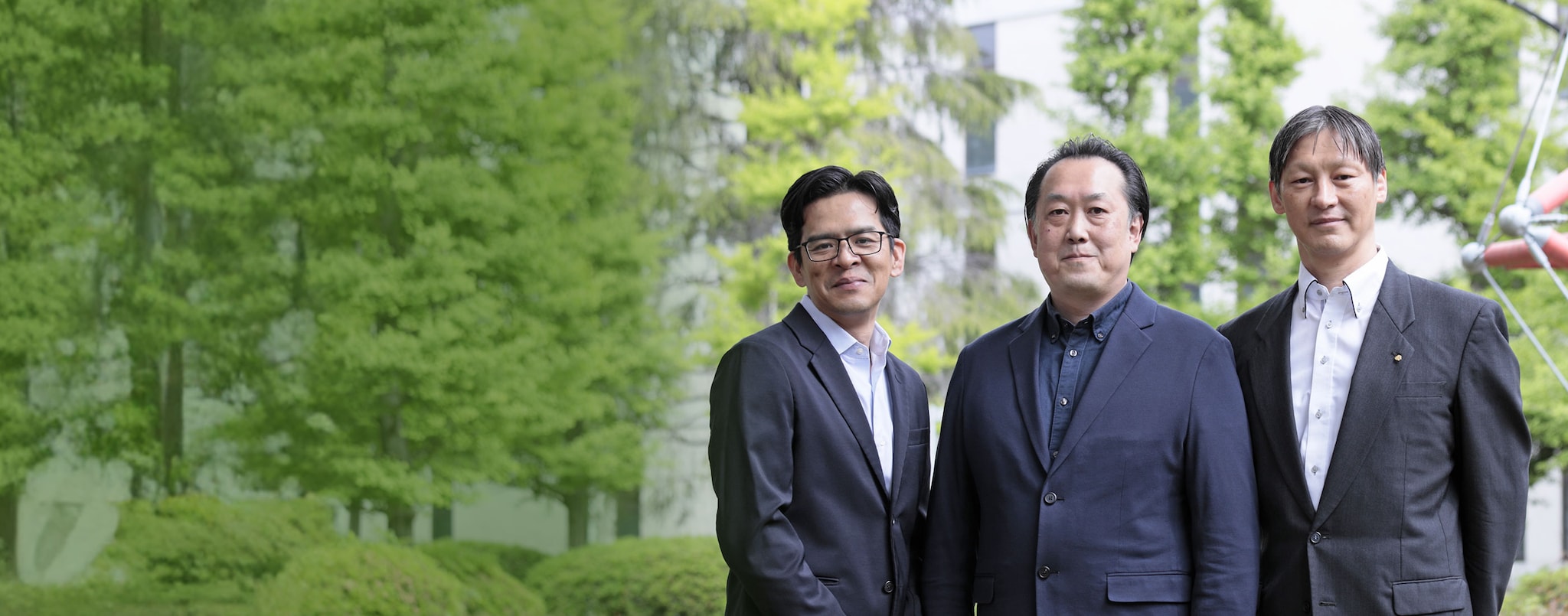
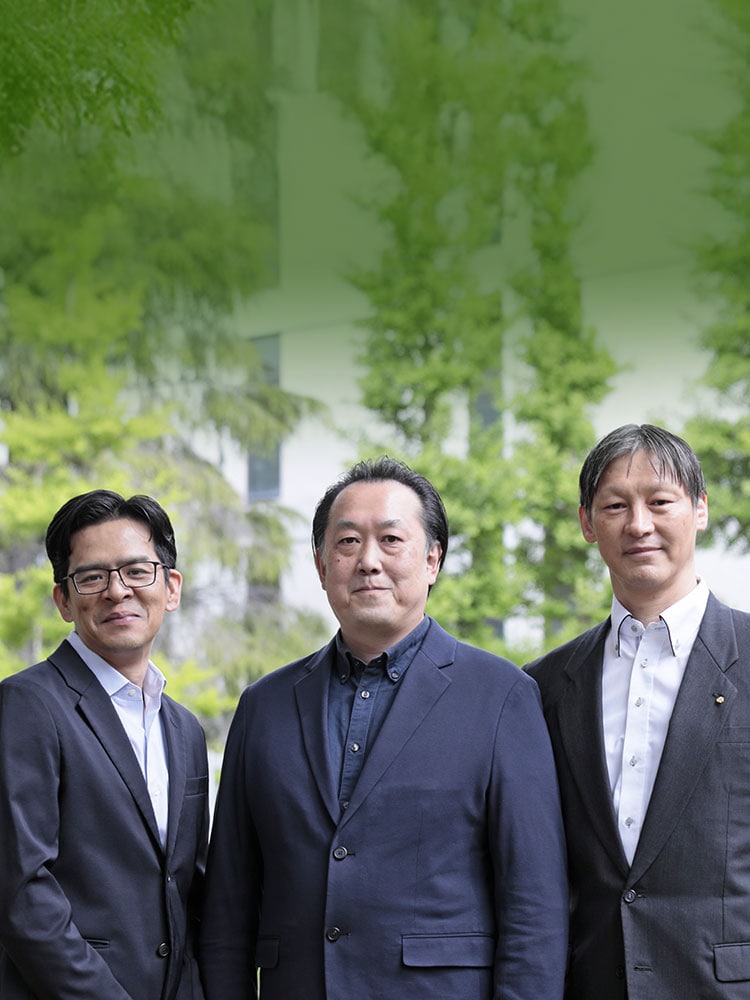
Unveiling the Origins and Vast Potential of the Spin Photo Detector, a World-First Light Detection Technology
TDK, in collaboration with Nihon University, has developed the Spin Photo Detector—the world’s first device of its kind that captures ultra-fast optical phenomena as measurable electrical signals, enabling their visualization. This is a feat that has long eluded conventional light detection technologies. Behind this breakthrough lies a deep-rooted scientific inquiry, inventive ideas from engineers, and a development process that synergized researchers from different disciplines.
We delve into the untold story behind the creation of the Spin Photo Detector through a dialogue with Professor Arata Tsukamoto of Nihon University’s College of Science and Technology and Hideaki Fukuzawa and Tetsuya Shibata of TDK’s Technology and Intellectual Property Headquarters. Together, they reveal how the pioneering innovation came to life, what it could mean for society, and its vast potential for the future.
▶Related Story:
From Semiconductors to Magnetism: Ultra-Fast Spin Photo Detector Revolutionizes Light Detection
The fusion of light and spin, an unprecedented concept
—Can you tell us how a device as groundbreaking as the Spin Photo Detector was developed?
Fukuzawa: Since joining TDK, my work has focused on spintronics devices and, more recently, optical devices, AR glasses, and photoelectric conversion. Drawing from these experiences, I envisioned that a new technology could be spawned by combining spintronics and light, which led to the concept of the Spin Photo Detector. After reading Professor Tsukamoto’s 2007 paper on electron heating*—the detector’s theoretical underpinning—I knew we had to collaborate.
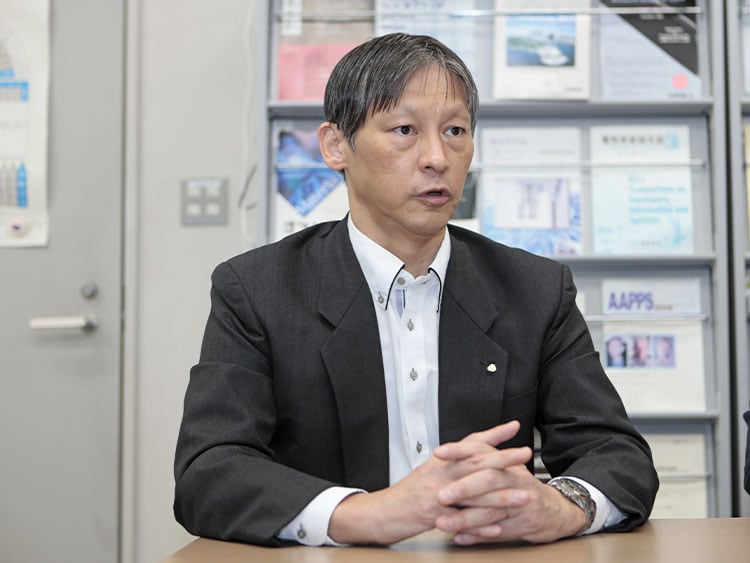
Hideaki Fukuzawa
Senior Manager
Applied Products Development Center
Technology & Intellectual Property Headquarters
TDK Corporation
Since joining the company, Mr. Fukuzawa has been involved with magnetic heads for HDDs and, in recent years, has focused on optical devices.
Tsukamoto: Electron heating in magnetic materials, as described in my paper, refers to a phenomenon where energy from light or other sources is directly transferred to electrons in an extremely short period, causing only the electron system’s temperature to spike on a femtosecond (quadrillionth of a second) scale. While the object itself (atomic motion) remains unchanged, only the electrons heat up—this thermal change, in turn, induces magnetic changes. This is the key principle behind the Spin Photo Detector.
My research had long focused on magnetic recording, which required a device capable of ultra-fast optical detection, but no such thing existed. I wanted to use a magnetic tunnel junction (MTJ)* element but lacked the advanced technologies and know-how to make it happen. When TDK—known for its robust background in MTJ elements—approached me with a joint research opportunity, I got on board very enthusiastically.
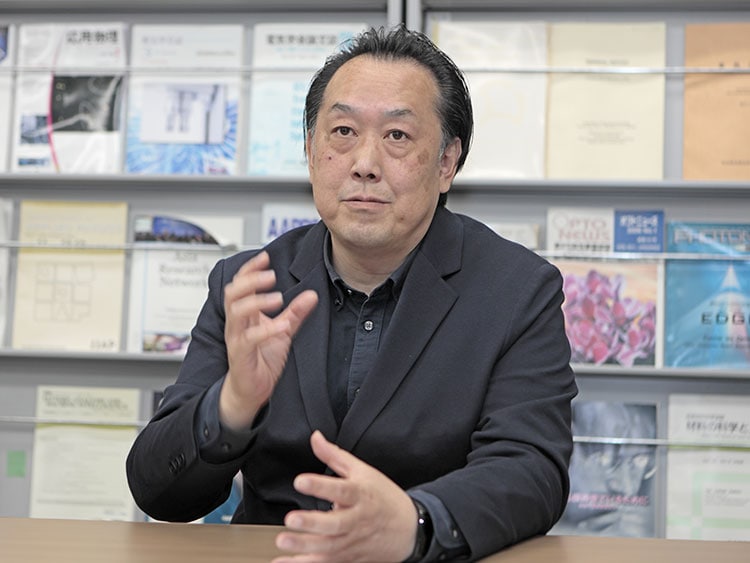
Arata Tsukamoto
Professor
College of Science and Technology
Nihon University
Professor Tsukamoto’s research explores ultra-fast magnetic properties and magnetic recording induced by femtosecond-scale light exposure. His central research themes include, “How fast can spin move?”
Fukuzawa: The idea of combining light and spin originated at TDK. But if we were going to actually implement it, we would need to support it in physics and validate it through experiments. We didn’t have the means to make the necessary evaluations, which is where we turned to Professor Tsukamoto. Initially, we were only hoping for any detectable signal, even if the response were much slower.
Shibata: I remember reaching out to Professor Tsukamoto in 2021, during the height of the pandemic. From those early exchanges to prototype fabrication, signal confirmation, and redesigns, every step was inside uncharted territory. But the exploratory nature of the work was what made it also exciting.

Tetsuya Shibata
Manager
Applied Products Development Center
Technology & Intellectual Property Headquarters
TDK Corporation
Mr. Shibata spent approximately ten years designing high-frequency components like antennas for mobile phones before joining the development efforts for the Spin Photo Detector.
Tsukamoto: Typically, joint research with companies begins with well-defined scopes or themes. But this was different. Thinking together from scratch, we built the core of the project hand in hand. I felt it was a truly joint effort.
* MTJ (Magnetic Tunnel Junction) Element: A device consisting of two ferromagnetic layers separated by an insulator. Its resistance varies depending on the magnetic orientations. MTJ technology is applied in TDK’s magnetic heads for HDDs and TMR sensors.
* Electron heating: A phenomenon in which energy such as light is directly applied to electrons, causing only the temperature of the electron system to rise sharply. Typically, substances are heated by the vibration of atomic nuclei, but in electron heating, only the electrons are heated extremely rapidly, in a matter of femtoseconds. This rise in electron temperature causes magnetic changes, which forms the principle behind the ultra-fast performance of the Spin Photo Detector.
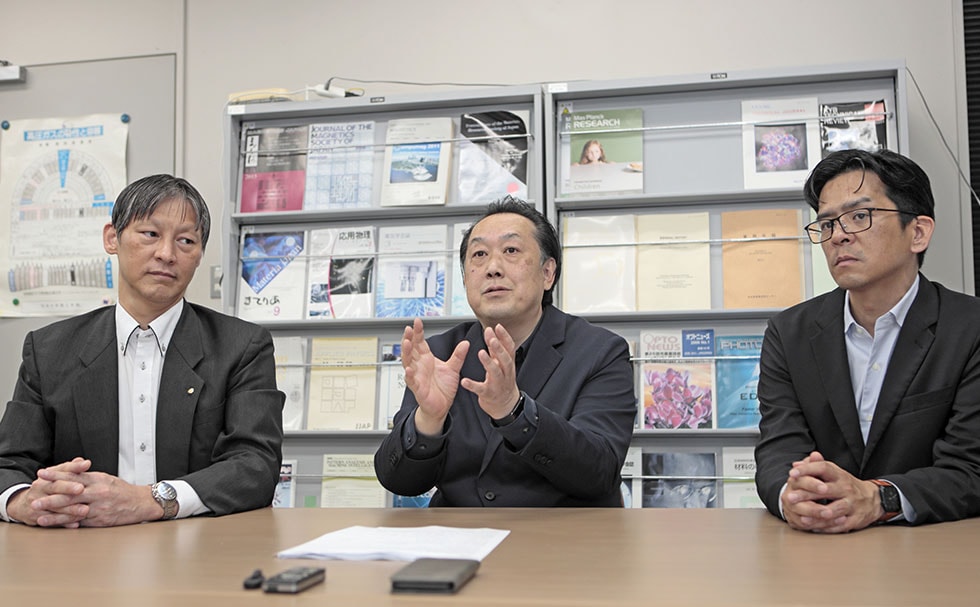
Developing the Spin Photo Detector using femtosecond (quadrillionth of a second) lasers
—Once the joint research was underway, how were the responsibilities divided?
Tsukamoto: On my side, we assembled a measurement apparatus from scratch that shoots ultra-fast light pulses at the element using femtosecond lasers and observes the responses. The speeds are far beyond what conventional electrical systems could capture, necessitating a complex setup where optics, magnetism, and electronics all intertwine at high levels. Especially challenging was the uncertainty—we were constantly asking ourselves, “Are we actually measuring anything here?” Because there were no existing benchmarks, we had to define our own standards as we went.
Shibata: I was responsible for circuit design and response verification on the device side. In the Spin Photo Detector, the MTJ picks up magnetic changes induced by electron heating, but the signals are extraordinarily faint and fast. We had to repeatedly tweak the analog circuitry to capture responses at those speeds. The moment we finally confirmed a clear signal—about a year into the development—was unforgettable.
Fukuzawa: We invited Professor Tsukamoto to join us from the conceptual stage. Sharing early-stage ideas and hypotheses with external collaborators is a rare approach for TDK. Being able to do that was an invaluable experience.
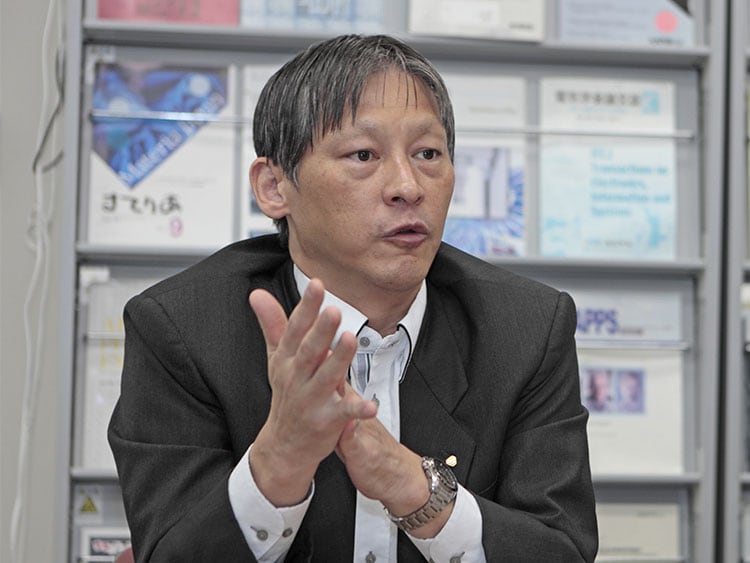
—What were the most significant challenges encountered during the development process?
Tsukamoto: With most sensors and devices, there’s an established set of evaluation protocols and principles. But with the Spin Photo Detector, none existed. We knew we were dealing with a new realm of physics, and figuring out how to quantitatively evaluate the results was enormously difficult. Exposure to light was itself a kind of “stimulus,” and it was challenging to discern and interpret the responses.
Fukuzawa: What made this project special for TDK was that our partnership began at the proof-of-concept stage—the project’s very core. This level of engagement is unusual in industry-academia partnerships, and we were able to maintain an open and candid dialogue with Professor Tsukamoto as we progressed. In hindsight, I believe this played a key role in the project’s success.
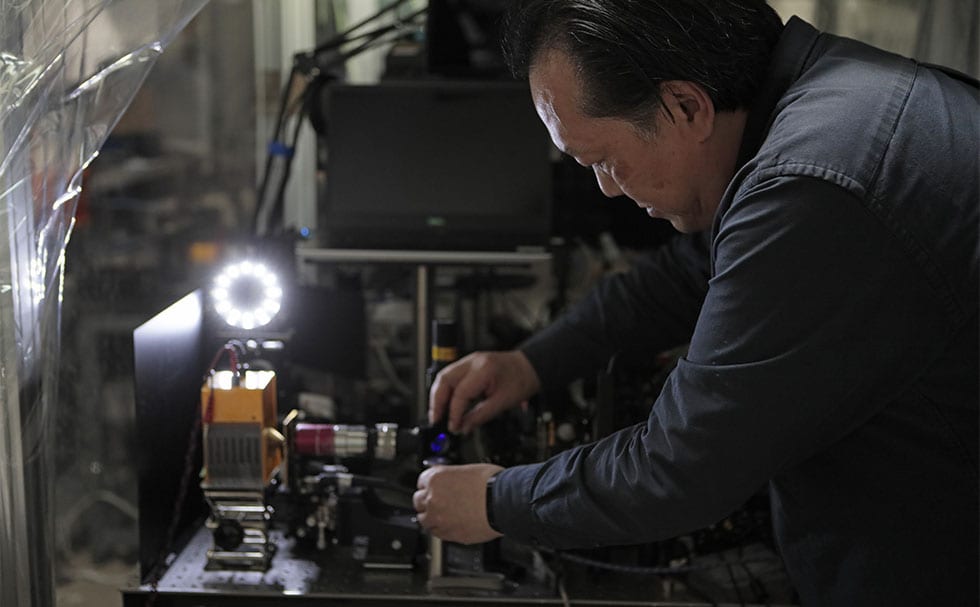
Accelerating photoelectric conversion with the world’s fastest light detector
—The Spin Photo Detector’s response speeds are said to be incredibly fast. What are the implications of this performance? What kind of technical and social impact do you expect to see?
Fukuzawa: Although the response time published in our paper is 20 picoseconds, we have a feeling the device is capable of much higher performance. Theoretically, it’s even possible that the actual response is occurring within several hundred femtoseconds—two orders of magnitude faster than 20 picoseconds. In fact, we believe it’s responding faster than what our current tools can measure. Should this be proven, we could safely call it the world’s fastest light detector.
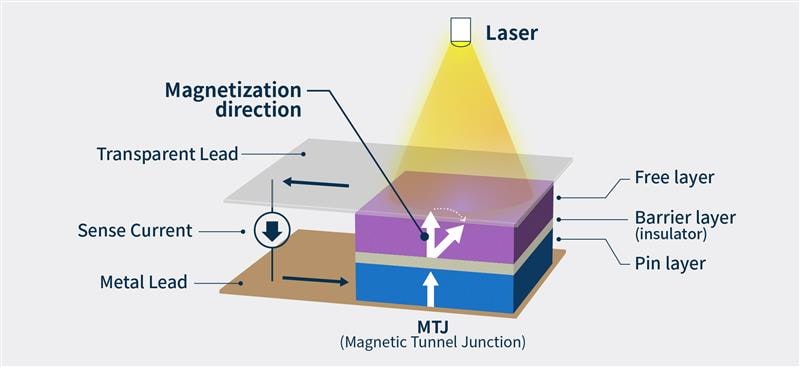
The Spin Photo Detector’s internal structure
Tsukamoto: That kind of speed has enormous significance. It means the energy transfer from photons to electrons—observed through electron heating—is occurring faster than the vibration of atoms. In other words, we’ll now be able to “see” a realm that was completely undetectable by any existing sensor. The scientific and practical implications are profound.
Shibata: One immediately promising real-world application is photoelectric conversion/CPO* for AI server farms and data centers. As systems continue to demand higher speeds, performance on the receiving end has become a bottleneck. Since TDK also develops transmit-side technology, the ability to cover both ends will significantly strengthen our position.
* Photoelectric conversion/CPO (Co-packaged Optics): A technology that compactly couples optical and electronic components. Combining the speed of light with the controllability of electronics is expected to enable high-speed communication and low power consumption beyond the capabilities of conventional electronic devices.
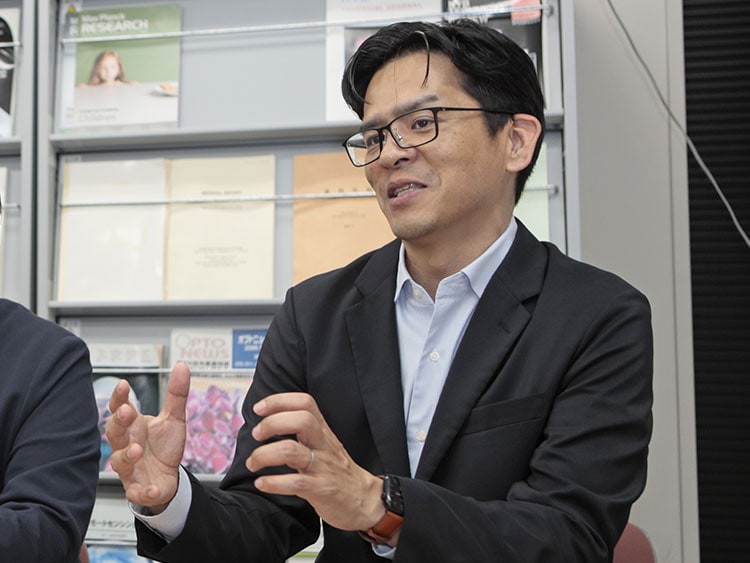
—What other fields might benefit from this technology?
Tsukamoto: Personally, I see great great potential in biotechnology. Examples include using near-infrared light to measure brain activity or enabling brain-machine interfaces (BMI). The Spin Photo Detector may be able to capture minute, previously invisible signals with high precision and in real time. It might help visualize not only blood flow and metabolism but neural activity—perhaps even something close to “thought.”
Fukuzawa: Space applications are another important field. Due to its strong environmental resilience, the Spin Photo Detector can be an ideal optical receiver in extreme conditions, such as lunar bases or space stations. In fact, we’re already receiving inquiries from abroad. Things taken for granted on Earth can be exceptionally difficult in space—which is why lightweight, high-speed, highly reliable devices like the Spin Photo Detector could be invaluable under such restrictive conditions.
Shibata: Eventually, we’d love to see this technology reach smartphones and wearables. Our current focus is on data centers, but the potential for personal devices is very real.
Joint research driven by the goal of creating a dream product
—What were the most memorable aspects of this project?
Tsukamoto: For the first time in my research career, I felt we were truly onto something. We were building a bridge between physics and engineering, and to see it materialize into an actual device was deeply fulfilling—a very rare experience. There is a real sense that we are witnessing phenomena that have never been observed by humanity before.
Shibata: Beyond the technical achievements, engaging with Professor Tsukamoto broadened my perspective as an engineer. Sharing long-term visions and exciting application ideas helped me grow personally. I still remember the exhilaration we experienced when we saw the MTJ element respond for the very first time.
Fukuzawa: As a company, productization is always the ultimate goal. With that goal in mind, the ability to continuously debate things from a physics perspective and the availability of theoretical validation were powerful drivers, thanks to the close collaboration with Professor Tsukamoto. It definitely engendered substantial synergy.
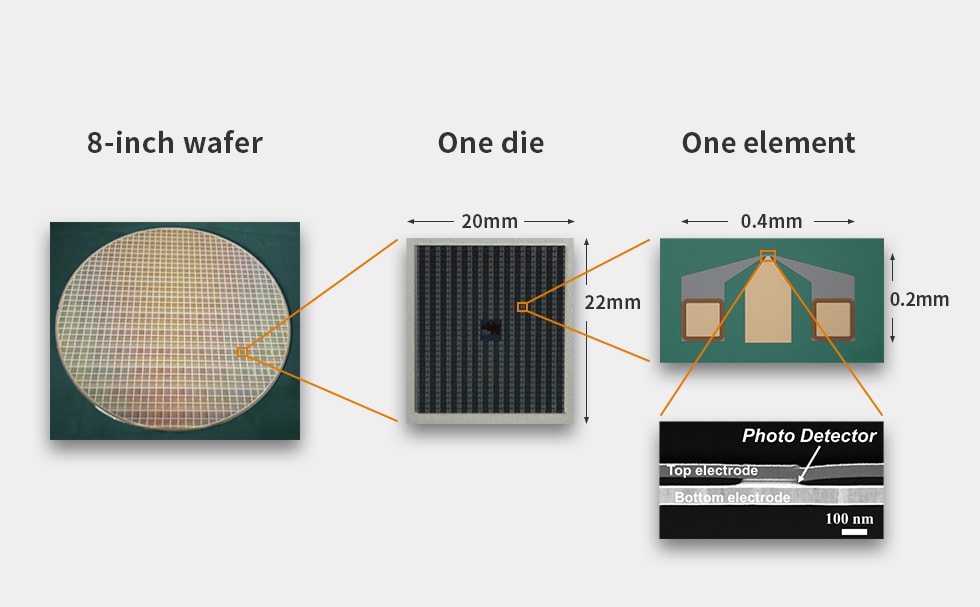
—How was the response to the announcement?
Fukuzawa: An internationally influential media outlet picked up our English-language press release and ran a dedicated feature, which quickly snowballed into global coverage. The article was translated into many languages, sparking interest across the world. We’ve since enjoyed a flood of industry inquiries.
Tsukamoto: I’ve been receiving speaking invitations from conferences, including events specifically organized to hear about this research. One humorous moment was when my university’s intellectual property office came asking, “Are you sure this is your research?” That’s how strong the response has been.
In Closing
The Spin Photo Detector isn’t just a new sensor—it’s a gateway to a previously invisible world of physical phenomena. What began with a visionary concept by TDK engineers amalgamated with Professor Tsukamoto’s years of research, bringing this world-first device to reality.
Through this dialogue, we’ve glimpsed the tremendous societal potential of capturing ultra-fast phenomena in real time as electrical signals. The Spin Photo Detector—the world’s first of its kind—stands ready to revolutionize applications spanning AI, biotechnology, space, and beyond.
